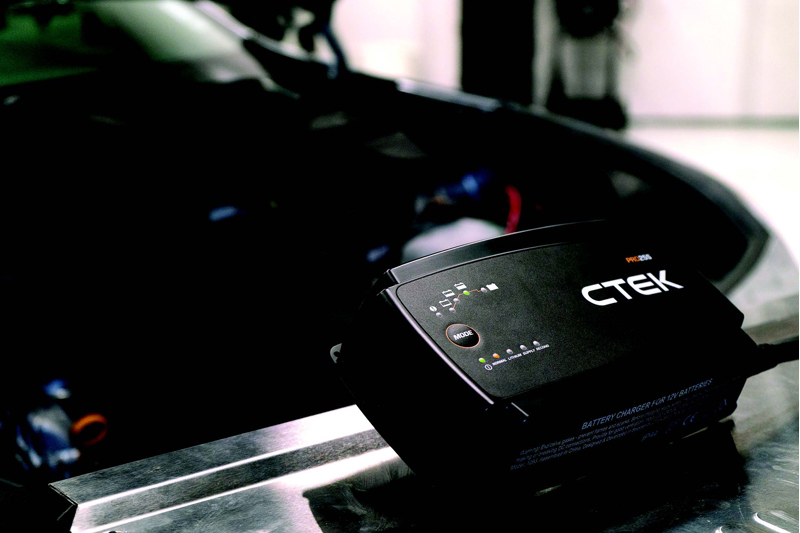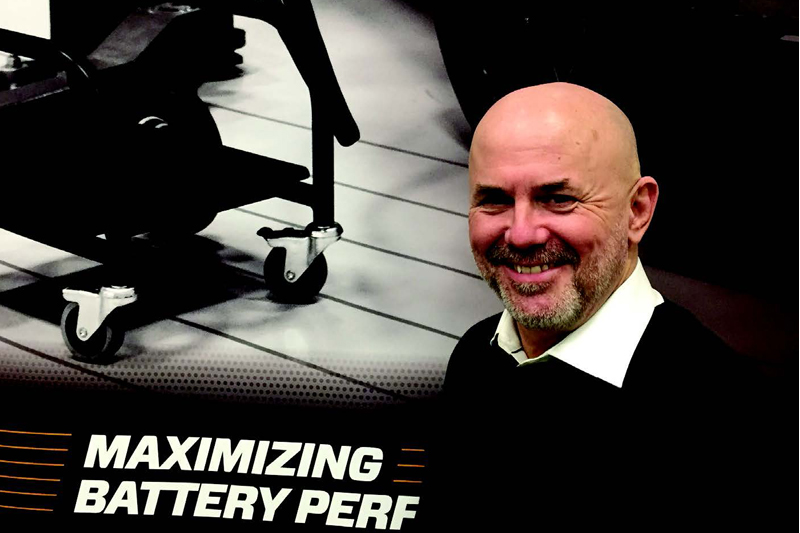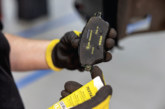
A Lithium (12V LiFePO4) battery requires a different approach to maintenance in storage, compared to that of its lead-acid counterpart. This is to ensure that factors, and in turn their customers, protect against warranty returns, maximise the lifespan of the battery and maintain high levels of customer satisfaction – that’s according to CTEK.
With Lithium (12V LiFePO4) batteries being more regularly used in high performance vehicles, and certainly being installed as the service battery solution in campers, caravans and 4WD vehicles, more and more factors are stocking these high performance, highcost batteries. Here, Tony Zeal from CTEK shares some best practice tips for storing Lithium (12V LiFePO4) batteries:
It’s not lead-acid: Before I go into the specifics, the first thing we need to clear up is that a Lithium battery has very different characteristics to that of 12V lead-acid, and therefore needs maintaining in a different way. These powerful and robust batteries are more expensive but have a longer expected lifespan than that of lead-acid, provided you store and maintain them properly.
Voltage: A fully charged LiFePo4 battery has an open circuit voltage of 12.8V (four cells at 3.2V per cell = 12.8V) – not at all dissimilar to a 12V lead-acid battery.
Self-discharge: In a Lithium battery, selfdischarge is minimal – with lead-acid it is a minimum of 0.1V per month. One of the biggest causes of self-discharge when a Lithium battery is in storage is the in-built Battery Management System (BMS). This system is constantly checking cell voltages to ensure that they don’t fall too low. This means that the battery is using a small, but constant amount of power.
Minimum voltage: Nearly all manufacturers state that a Lithium (12V LiFePO4) battery should not be taken below 2V, certainly not for an extended period of time. If battery charge levels fall below this critically low level for a longer period of time, the battery will begin to produce shunts within the cell, which can lead to soft shorts (an internal load), resulting in dangerous heat generation and early failure.
Cut out voltage: To protect against damage due to low voltage, the Lithium Battery Management System will have a cut-out voltage anywhere between 2.0- 2.8V (depending on the manufacturer) which will prevent the battery from discharging any further. Think of this as a type of battery watch or battery guard.

Maximum state of charge (SOC): For short periods of time, it is not a problem to store a Lithium battery at 100% SOC. If storage is long term, then it is beneficial to store the battery at around 40-50% SOC. Storing a Lithium battery at 100% SOC causes internal stressing within the battery – if this is coupled with high ambient temperatures for extended periods, it can be more stressful on the battery than heavy cycling. Battery life expectancy and battery performance could be reduced significantly.
Use a dedicated lithium charging mode: CTEK does not recommend that you charge a Lithium battery with a lead-acid battery charger. In CTEK chargers, for example, trigger levels within the algorithms for Lithium and lead acid chargers are very different. This is to ensure each technology is charged as quickly and safely as possible. Not using the correct charger will impair the battery’s performance and service life. It is also worth noting that the BMS in a Lithium battery may consider some parts of the lead-acid charging curve as too high a voltage, and put the battery into standby, so a compete charge won’t be delivered.
Temperature: Lithium batteries like to be kept as cold as possible without freezing – the fridge is perfect! If battery cell temperatures rise too high, this can have a massive effect on the battery lifespan. Prolonged exposure to heat can result in degrading of the electrode materials – leading to poor performance and reduced service life. If the temperature of the battery does drop below freezing, it can still operate, but it would need to be allowed to recover from freezing before a charge was delivered.
Storage: Best practice is on wooden pallets – this is to allow circulation of air at ambient temperature (if stored on a cold concrete floor this can create a heat sink). Stacking of batteries is not advised – stacking can cause damage to casings/handles and in extreme cases, short circuiting of the battery below.
Keep clean: A dirty battery can discharge more quickly than a clean battery (small amounts of voltage can track across the moist dirt to earth, speeding up the discharge process). Always clean off dirt and moisture
Charging Lithium batteries
The PRO25 from CTEK combines power and advanced technology with safety, portability and flexibility to work with any 12V vehicle battery, including Lithium. Using advanced technology, the PRO25 will ensure that a safe, fast charge is delivered to exactly meet the needs of the individual battery. A built-in temperature sensor will adjust the charge rate, depending on temperature, to achieve maximum charge levels.
The PRO25 is easy to use and has a dedicated Lithium mode for use with Lithium batteries. It’s also very simple to connect, spark proof, and reverse-polarity protected to protect the user and the battery. Designed to ensure easy handling in the workshop, it’s lightweight and portable. A rugged, impact-resistant casing means the PRO25 can handle the toughest environment. It also comes with a two-year warranty.
Preparing the battery for sale
Don’t forget to remind your customers: if they do make the sale of a Lithium battery, and it has been in storage for a while, it should have been kept at 50-60% SOC. To enhance their customer service offering, suggest they deliver a charge to the battery before the customer takes the battery away to ensure maximum performance from the moment they leave the shop!




![The [M]enable mental health movement explained](https://pmfmag.co.uk/wp-content/uploads/2024/03/Menable-mental-health-165x109.jpg)


